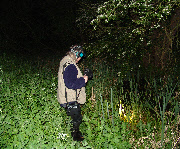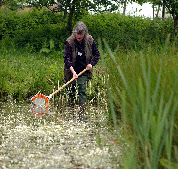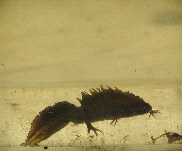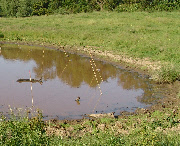
21-




Great Crested Newt Surveys must take place in the spring, particularly where Natural England Licensing is expected to be needed. Preferential survey time is between April and the end of May. Surveys conducted if the weather is too cold or late in the season, late June, will not be accepted by Natural England.
Surveying consists of initially looking at the habitat (pond and terrestrial) and assessing its suitability for great crested newts. With ponds this includes application of the Habitat Suitability Index. The quality of the pond is assessed by looking at the aquatic plants and animals present. Our licensed surveyors will search for newt eggs and net the pond(s) to look for invertebrates and, if surveys undertaken later in the year, look for newt tadpoles.
In addition to this basic form of survey it is important to estimate population levels by undertaking night surveys when newts are active.
Suitable ponds can be lamped with special high power torches. Newts spotted can then be sexed and counted.
Ponds which provide suitably safe access and substrate conditions can be bottle trapped over night. This survey method is particularly useful where the water is too turbid for lamping to be effective.
If the assessment of the habitat in relation to the development indicates that there is a risk that Great Crested Newts may be present then a minimum of 4 separate surveys during the spring will be needed to indicate absence. A minimum of 6 surveys will be needed for a licence. The survey techniques employed here will normally be egg searching, lamping at night and bottle trapping to provide a sufficient quality of data.








